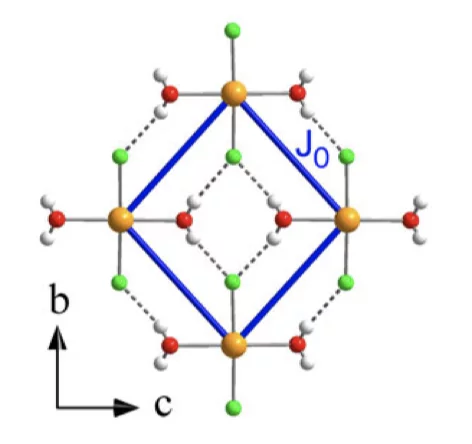We report an extraordinary pressure dependence of the magnetic interactions in the metal-organic system [CuF2(H2O)2]2 pyrazine. At zero pressure, this material realizes a quasi-two-dimensional spin-1/2 square-lattice Heisenberg antiferromagnet. By high-pressure, high-field susceptibility measurements we show that the dominant exchange parameter is reduced continuously by a factor of 2 on compression. Above 18 kbar, a phase transition occurs, inducing an orbital re-ordering that switches the dimensionality, transforming the quasi-two-dimensional lattice into weakly coupled chains. We explain the microscopic mechanisms for both phenomena by combining detailed x-ray and neutron diffraction studies with quantitative modeling using spin-polarized density functional theory.
Reference: B. Wehinger et al, Physical Review Letters 121, 117202 (2018)
Read full article: here


